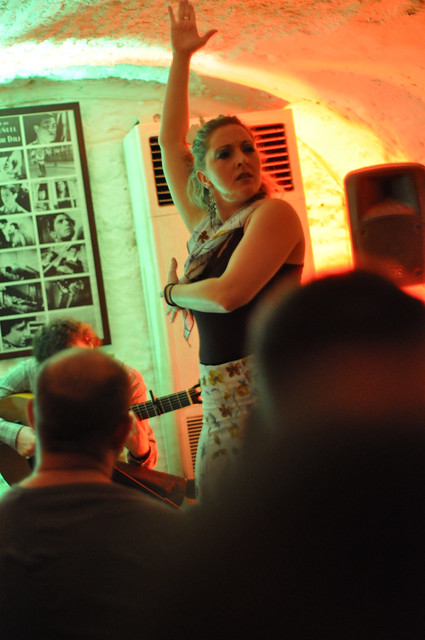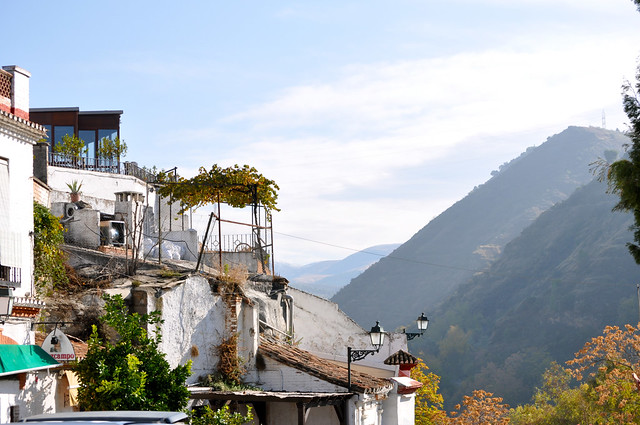 |
| Flamenco en Granada |
Three girls researched and performed a flamenco dance. I really wanted to see it, but I was teaching 5th grade and just barely missed the girls' performance, and caught them as they were clicking and swishing to their next class (in very clicky heels and very swishy skirts.) They offered to perform for Spanish class that afternoon, which seemed like a great way to spend the last hour before break. (Not always a time for strenuous academic effort.)
I am envisioning future Spanish-P.E. collaborations on this type of a project, especially for native speakers who could write reports in Spanish, and offer demonstrations that are kinesthetic enough for even more basic levels to understand.
 |
| Sacromonte, Granada, where many caves in the hillside hold homes, shops, and famous flamenco performances. |
I showed them one of my favorite videos - Tengo, by Macaco. They compared (using these guided notes) what they knew about traditional flamenco with this modern video.
Other Flamenco resources:
- Notes:
- Flamenco en España - A presentation with with some images and examples of the elements of traditional flamenco. (All slides were created using images found via google search, so these images do not belong to me.)
- Videos:
- Flamenco en una cueva - A performance in one of the caves in Granada, which many consider the birthplace of the dance.
- Flamenco en la calle - Street performers in Granada. This includes the use of el cajón, and a surprise halfway through.
- Albanico mágico - A performance in San Francisco. This is a larger-scale interpretation of flamenco, using fans. (The video is 6 minutes long, so I usually let kids watch it if they are working on their own fans.)
- Bailando - Enrique's popular song includes lots of dance styles, including flamenco.
- Crafts: Los Albanicos
This is a good end-of-the-day, end-of-the-week activity, since it generally leads to kids of all ages wiggling their eyebrows at each other over paper fans for the rest of the day. (And on more than one occasion I've had to save teachers' stacks of homework and worksheets from becoming fans, once young students get the hang of folding.)




